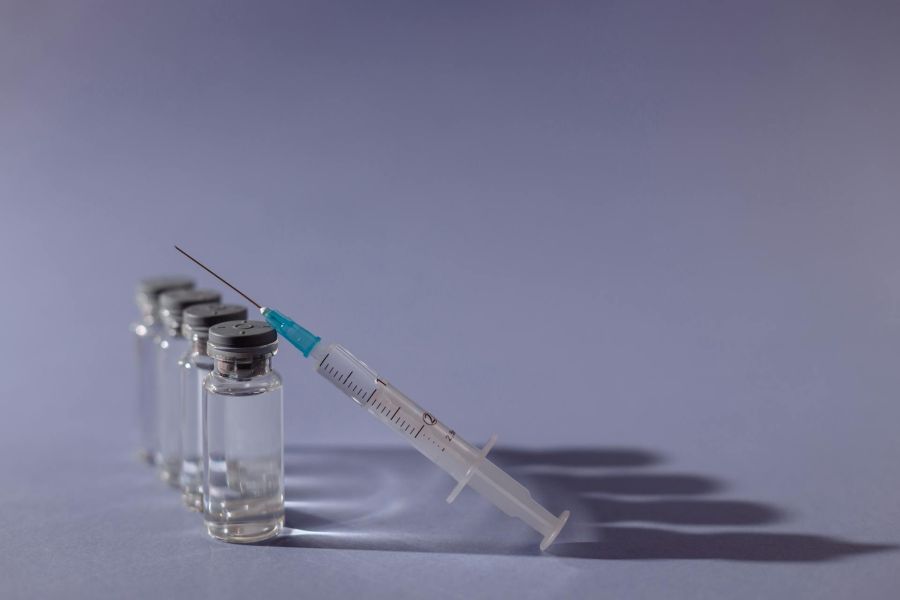In scientific research, properly storing and handling research-grade peptides is crucial for maintaining their effectiveness and ensuring accurate results. These specialized compounds require precise conditions to remain stable and functional. By understanding the best practices for storing and handling these peptides, you can ensure that your research remains reliable and your results are valid.
Here’s what you need to know about proper handling and storage practices for peptides:

1. Understanding Research-Grade Peptides
Research-grade peptides are highly purified compounds used in scientific research to study biological processes, test drugs, or explore new therapies. Unlike peptides meant for dietary supplements or cosmetics, research-grade peptides meet rigorous quality standards. They are manufactured under controlled conditions to ensure their purity and consistency.
These peptides play a critical role in experiments, as even minor impurities can skew results or lead to incorrect conclusions. Knowing the difference between research-grade peptides and other types helps ensure that researchers use the appropriate materials for their studies.
2. Where to Find Quality Peptides for Sale Online
When searching for research-grade peptides online, choosing a reputable supplier is essential. Find peptides for sale online at Sports Technology Labs. Their products are exclusively for laboratory research and unsuitable for human, veterinary, or household use. This specialization ensures that researchers receive high-quality peptides that meet stringent research standards. By sourcing peptides from such trusted suppliers, you can be confident in the quality and reliability of the products, which is vital for the integrity of your research.
3. Optimal Storage Conditions
Proper storage conditions are critical for preserving the integrity of research-grade peptides. Peptides should be stored in a cool, dry place, away from direct sunlight and heat sources. Most peptides are best kept at low temperatures, often between -20°C and -80°C, to prevent degradation. Maintaining a stable environment with low humidity is essential to avoid moisture absorption, which can compromise peptide stability. Using a well-calibrated freezer and monitoring storage conditions regularly helps ensure that peptides remain effective throughout their intended use.
4. Handling Peptides Safely
Safe handling of peptides is essential to prevent contamination and ensure accurate research results. Always use clean, sterile tools and equipment when working with peptides. Personal protective equipment (PPE), such as gloves and lab coats, should be worn to minimize the risk of contamination. Additionally, work in a clean, controlled environment, such as a laminar flow hood, to reduce exposure to airborne contaminants. Proper training in handling protocols and maintaining a clean workspace are key factors in preserving the quality of research-grade peptides.
5. Avoiding Common Storage Mistakes
Avoiding common storage mistakes is crucial for maintaining the effectiveness of research-grade peptides. One frequent error is storing peptides in improperly sealed containers, which can lead to exposure to air and moisture. Peptides should be kept in airtight, moisture-resistant containers to prevent degradation. Another mistake is failing to monitor and control storage conditions, such as temperature fluctuations, which can adversely affect peptide stability. Regular checks and maintenance of storage equipment and adherence to recommended storage protocols help prevent these issues and ensure the peptides remain viable for research purposes.
By following these guidelines for understanding, sourcing, storing, handling, and avoiding common mistakes with research-grade peptides, researchers can ensure the integrity and success of their studies.
6. Proper Labeling and Documentation
Proper labeling and documentation are vital for managing research-grade peptides effectively. Each peptide container should have a clear and accurate label with essential information such as the peptide’s name, batch number, concentration, and expiration date. Accurate labeling helps prevent mix-ups and ensures that the correct peptide is used for each experiment.
Also, maintain comprehensive peptide purchases, storage conditions, and usage records. Documenting these details not only aids in tracking and inventory management but also provides crucial information in case of any issues or discrepancies during research. Good documentation practices contribute to the reproducibility and reliability of scientific experiments.
7. Using Appropriate Containers
Choosing the right containers for storing research-grade peptides is crucial for maintaining their stability and effectiveness. Containers should be made from materials that do not react with the peptides or allow moisture and air to enter. Common choices include glass vials or high-quality plastic tubes designed specifically for chemical storage.
Avoid containers that may leach chemicals or degrade over time, as these can compromise the peptides. Ensure containers are tightly sealed and equipped with proper closure mechanisms to prevent contamination. Using appropriate containers helps protect the peptides from environmental factors and preserves their integrity throughout their shelf life.
8. Handling Expiry Dates and Shelf Life
Managing expiry dates and shelf life is an important aspect of peptide storage. Peptides typically come with a specified shelf life, which indicates the period during which they remain stable and effective. Regularly check the expiry dates of your peptides and use them before they reach their expiration.
Storing peptides under optimal conditions can sometimes extend their shelf life, but adhering to the manufacturer’s guidelines is essential for the best results. Using expired peptides can lead to unreliable research outcomes and may even pose safety risks. By diligently tracking and managing expiry dates, you ensure that only fresh and effective peptides are used in your research.
Proper disposal of unused or expired peptides is vital for maintaining safety and environmental responsibility. Never dispose of peptides through regular trash or down the drain, as they pose environmental and health risks. Follow your institution’s guidelines for chemical waste disposal, which often include special procedures for handling and disposing of research chemicals. Contact your waste management facility or hazardous waste disposal service for advice on safely disposing of peptide vials.
Adhering to best practices for storing and handling research-grade peptides is essential for maintaining their effectiveness and ensuring accurate research outcomes. Understanding the role of research-grade peptides, sourcing them from reputable suppliers, and following guidelines for storage, handling, labeling, and disposal all contribute to successful scientific research.
By implementing these practices, researchers can safeguard the quality of their peptides, minimize contamination risks, and ensure reliable and reproducible results. Proper management of these valuable compounds ultimately supports the advancement of scientific knowledge and research integrity.

Founder Dinis Guarda
IntelligentHQ Your New Business Network.
IntelligentHQ is a Business network and an expert source for finance, capital markets and intelligence for thousands of global business professionals, startups, and companies.
We exist at the point of intersection between technology, social media, finance and innovation.
IntelligentHQ leverages innovation and scale of social digital technology, analytics, news, and distribution to create an unparalleled, full digital medium and social business networks spectrum.
IntelligentHQ is working hard, to become a trusted, and indispensable source of business news and analytics, within financial services and its associated supply chains and ecosystems









